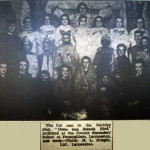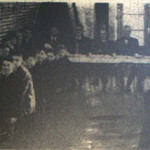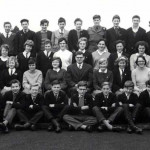.

Pennygillam, or Pennegilman as it was originally known, receives its first mention in 1477 when a parchment roll, in good condition, fifty-five inches long, by eight inches wide, contains the account of expenses for ‘Douneheved Burgh‘ from the feast of St. Katherine the Virgin. ‘The fee-farm rent of 100s. is paid to John Umfray and Richard Gourge, Provosts; rent is also paid to T. Cork for Seint Mare park, and Pontonysbarn, and for lands in Penegilman; to John Lanne for a close lately of John Page near the chapel of St. John; and to other persons as in former accounts. Total, 105s. 7½ d.‘ (The Histories of Launceston and Dunheved, page 153).
Great Pennygillam and Little Pennygillam, along with Longlands, Haye and Windmill, formed what was known as the ‘Aftermath‘ lands (Aftermoweth common land) which were held by the Launceston Corporation (Borough Council) in trust for the personal benefit of the members of the corporation and their widows. In the late 18th century this land was sold with the two Pennygillam’s being converted into farms. Both Pennygillam’s combined covered an area of 42 acres straddling the main Bodmin Road with Little Pennygillam standing on the Northern side where the Launceston Cemetery now stands. This is how things remained for the next century with the Great Pennygillam farm entrance being roughly at the present day’s entrance to the estate is positioned. The first mention of the farm as an entity came in March 1816, when the property was put out to let (below).

One of the first owners of this land was a Mr William Luney, who placed 5½ acres of ‘rich meadowland with a barn thereon’ for sale on March 3rd, 1831 at the Kings Arms Hotel, in Launceston.
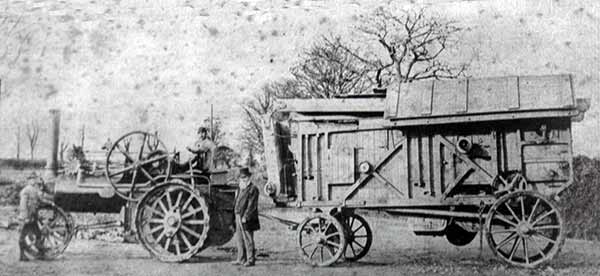
In 1848 a new toll house was erected near the farm, collecting tolls from traffic using the turnpike road from South Petherwin and Bodmin. This replaced the former gates/chain that had been in use prior to this date (Pennygillam Cross Gate).

With cricket becoming a popular sporting pastime, a club was formed at Launceston in the early 1850s with one of the fields at Little Pennygillam Farm paying host to the Launceston and Werrington Cricket club. This ground would go on to play host to a wide selection of events, including the Launceston Agricultural Show, Royal Cornwall Show and on May 29th, 1856, a ‘Peace Commemoration‘ (the signing of the Paris peace treaty which brought to an end the Crimean War), where it was reported several thousand spectators came to watch the ‘evolutions‘ of the 2nd Cornwall Rifles, at their drilling ground. “After going through with great precision, variety of characteristic manoeuvres, the men fired three rounds of cartridge, and led on the officers, gave three loud cheers in honour of Her Majesty, and the glorious event of the day.” This was followed by an exhibition match by the Launceston and Werrington Cricket Club.
In October of 1859, the Launceston Volunteer Corps was formed over concerns in Britain of the overall aims of France and the Second French Empire of Napoleon III. The ‘sports’ field at Little Pennygillam was chosen for their range.
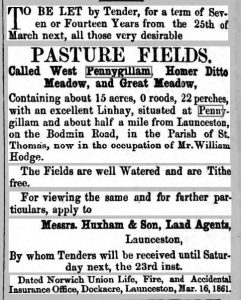

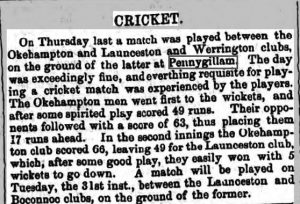
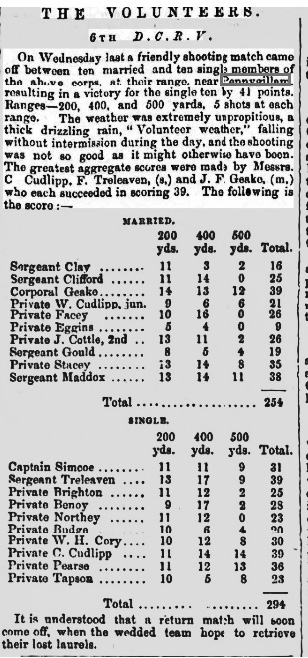
The first recorded football match was also held at the Pennygillam ‘sports’ ground,’ with a match played between the Launceston Rifle Corps and Civilians on 30th September 1869. The result was an emphatic four-nil victory for the Corps. Over the following years, football would continue to increase in its popularity, but it wasn’t until 1881 when another match was recorded playing at Pennygillam with a match between Launceston and Dunheved College, resulting in a one-nil win for the College. With a continued interest in forming a club, a meeting was held on September 2nd 1891 in the Guildhall. After some discussion, as to whether it should be a Rugby or an Association Club, it carried by a vote for Association. The officers were then elected as follows:- President, Mr W. Wevill; vice-presidents, Messrs Hawkens, Downing, Body, and Hare; secretaries Messrs Wenn and Knill; Treasurer Mr G. Nicolls; committee, Messrs Cocks, F. Pethybridge, Matthews, Hockin and Prout. A half-crown subscription was decided upon. And so the Clarets were born with their ground being on part of what was then Pennygillam Farm, and today the location of St. Johns Road.

As the 19th century progressed, the monthly Launceston Cattle Market gained in popularity and it was acknowledged that holding it in the towns square and streets was not sustainable. So, in October 1876, the then owner of Werrington Park (who owned the northern part of the land at Pennygillam that is now St. John’s) Colonel Deakin, offered a field at Pennygillam as a solution to the towns overcrowding problem. This was discussed at that month’s Town Council meeting, held on the 23rd, although no decision was made at the meeting, ultimately it never transpired and it would be another 24 years before a permanent site was found for the market in Race Hill. It would be Colonel Deakin’s son, James Henry Deakin II, who would come to the rescue of Launceston after it closed its Bowling Green Cemetery in Horse Lane (now Dockacre Road) in 1881, by offering land at Pennygillam for a new cemetery. Subsequently, the land was duly purchased being added to with the purchase for £330, of an adjoining field from Mr James Treleaven in 1895. To this day this remains the site of the Launceston Cemetery.



By 1887, Pennygillam had been purchased by the Trebursye Estate then owned by Launceston solicitor and businessman, Charles Gurney, with the tenant being a Mr Charles Hooper. He gave up his tenancy later that year, with the property being placed on tender to let. In 1894, the town council wanted a site for the purposes of a public recreation ground, and they considered that the field at Pennygillam that was being used by the Cricket and Football Clubs, was the most suitable. They reported to the February meeting of the town council that they had written to the owner, Mr D. H. Shilson, of St. Austell, asking if he would sell and at what price. The following month the subject was again discussed, but it was decided that the land at Windmill would be more suitable, offering better views, and so the land at Windmill was duly purchased. (This was later added to by land given by Mr Charles Gillbard and is now Coronation Park).



On June 14th, 1904, Miss Gurney owner of the Trebursye Estate, placed Pennygillam along with neighbouring properties for sale by auction. There is no record of who purchased the farm or for what value it went for.

The First World War put an end to both the cricket and football clubs and although the ‘Clarets‘ were reformed in 1921, subsequently joining the Plymouth and District League in 1922, in 1926 they had to tender their resignation due to being unable to compete on Saturday’s due to it being the town’s market day and many of the players having to work.
To make matters worse for the ‘Clarets‘ in September 1925, the ‘sports‘ grounds of the former Launceston Cricket and Football Clubs was put up for auction at the White Hart Hotel, by Launceston auctioneers Messrs J. Kittow and Sons, thus ending some 70 years of sporting participation on the site.


Pennygillam Farm played host to the Royal Cornwall Show in 1926 with part of the football field also used. This was at a time that the show had no fixed site and was shared around the major Cornish towns each year. The total entries for 1926 were a record for the show up to that date. A week after the show finished, the farm was again put up for sale by auction.
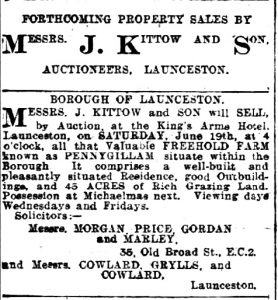
A newly formed Launceston Football Club resumed their long association with Pennygillam when the club rejoined the Plymouth and District League in the second division in 1928, playing their games in a field at Pennygillam Farm. With this, other sporting events were held on the field over the following years, many such as speedway (below in 1936), to help raise funds for the football club.

It was the Second World War that changed everything for George Robbins the then farmer of Pennygillam Farm, for it was chosen, to some disgust by a few locals who thought it criminal to turn very good farming land into a camp for soldiers. This was initially to be a temporary camp, constructed first with canvas tents, but these were soon replaced with Nissen Huts. As the war progressed, so Launceston itself became very much a garrison town, especially once the Americans joined the War, with the ready-made camp at Pennygillam being once gain used, ironically along with another constructed on another part of the former ‘Aftermath’ lands, at Scarne. On and after ‘D Day‘ the camps emptied and were in turn used as P.O.W. camps, with Pennygillam being affixed as ‘Camp 257’.

With the war over, things did slowly return to normal, with Launceston Football Club agreeing with the owner to return to play on a field at Pennygillam for the 1947-48 season. Things for the Launceston Cricket Club, however, did not work out, and their attempt at acquiring or sharing the ground at Pennygillam was eventually abandoned in the October of 1947. In February of 1948, the town was shocked to learn that the War Office’s long term plans for Pennygillam, was to turn it into a permanent rifle range. The plans were passed to the East Cornwall Planning Joint Committee by the Ministry of Town and Country Planning for its observations. The committee decided to inform the Ministry that in their view the whole question of rifle ranges should be the subject of careful discussion with the War Office before any decisions were made which might interfere with local amenities. Mr G. C. Page, the Planning Officer, reported that according to the information available firing would take place once or twice a month at weekends. He thought this might be considered a low estimate as it was likely that many rifle clubs would wish to use the ranges if permitted. In the end, the plan was dropped.

With the worry of the rifle range being allayed, Pennygillam was set up as a ‘Harvest Camp‘ in 1950. These were set up to accommodate the extra labour that was needed in agriculture at certain times of the year. Volunteers went for a week or more at a time. After being used as a ‘Harvest Camp’ the buildings were then converted in the late 1950s, to house the new Pennygillam Secondary Modern Comprehensive School.
Pennygillam Secondary Modern School Gallery.



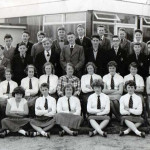



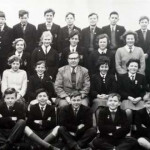
In 1965 the school was absorbed and moved to the expanded Launceston College. The buildings then laid dormant until it was decided to use part of the old school/camp buildings for industrial use with the ‘Marathon’ company being one of the first businesses on Pennygillam, and who would become one of the biggest employers in the area until their closure in the late 1970s. Another company to soon join Marathon, were the local vehicle sales and repairs company, J. B. Smith and Son. They had been a long-established family run business, running a Vauxhall/Bedford dealership out of the Castle Garage in Western Road. Seeking somewhere to run their Bedford workshops from, Pennygillam offered adequate space for their expansion. In 1967 Abru Aluminium inaugurated by Frank Abbey and John Bruton and in 1968 they chose Pennygillam as their start-up site and a workforce was soon built up to six local men. During the 1970s saw rapid expansion and by 1980 the company was turning over £3m annually.

As the 1970s saw Abru’s expansion, it also witnessed that of the estate, with national companies such as Securicor and Booker’s Cash and Carry setting up operations at Pennygillam. Although Marathon closed in the 1980s, they were replaced on the estate by other businesses keen to use the vacated properties (Abru extended their factory to the Marathon building). By the mid-1990s, the estate was practically full and as a consequence, the remainder of the old Pennygillam farmland was used to extend the estate to its present size bordering the drive of Trebursye Manor (now called Penbownder). By then Abru had been purchased by Hendersons Plc, and an aluminium extrusion plant was installed in Belper, Derbyshire, marking the end of Abru’s connection with Launceston. The last Cornish ladder was made during November 1997. (Ironically in 2016 the Belper manufacturing site itself closed with manufacturing moving to the Maldon, Essex and Binh Duong, Vietnam facilities).
11 acres of the extended estate was purchased by Samworth Brothers who constructed a bakery for their ‘Kensey Foods‘ brand on the site to produce a wide range of chilled desserts, including custard tarts, cream cakes, fruit pies, crumbles, tarts and sponge puddings, for some of the UK’s leading retailers including Tesco. However, after the opening in 1997, the brand struggled to maintain profits in its later years and after several years of losses, the bakery was finally closed in July 2019 with the loss of 650 jobs. The site is presently (January 2020) for sale for £4.35m.
The estate now lies partly in the St. Mary Magdalene parish and part in the South Petherwin parish with Lowley Brook which runs through the estate being the border between the two.
Visits: 258



